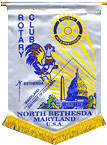
While a DC librarian, Bill DeCosta researched the life of hoboes in the 1890’s local news papers and wrote a short book. Hoboes valued travel over living and working in one place. They would work and live off the land for a while and then move on, usually by freight train. Hobo camps were once common, especially after 1893, when a severe depression gripped the U S. Rock Creek Park had several hobo settlements. The space behind the Corcoran Building at 15th and F streets NW (now the Smithsonian’s Renwick Gallery) was known as “Heat Alley” for the warmth that gusted from the boiler room and made it popular in the winter. “Hobo Hollow” was the name for a camp at Dyke Marsh south of Alexandria.
Funds for Causes represents a paradigm shift in charitable fundraising, moving away from traditional door to door or on location direct sales methods. By harnessing the power and popularity of online shopping, Funds for Causes innovative web bases fundraising and auction platform promises to change the way non-profit organizations and charitable causes raise funds for ever. This new system can successfully raise needed funds for worthwhile causes while providing businesses with unique branding and selling opportunities. For more information see www.fundsforcauses.com
Autumn Wilson is a Montessori Guide (teacher) and a mother of four. Dr. Maria Montesssori, an Italian creator of Montessori Method of Education, once said “education should no longer be mostly imparting of knowledge, but must take a new path, seeking the release of human potentialities.” Four year olds are taught to read and write before the hand is ready. They are calm and disciplined with freedom of movement to discover knowledge independently. They use blocks of letters and numbers to form words and add numbers. Autumn showed a 2 minute movie of four year olds moving independently between writing and math exercises.